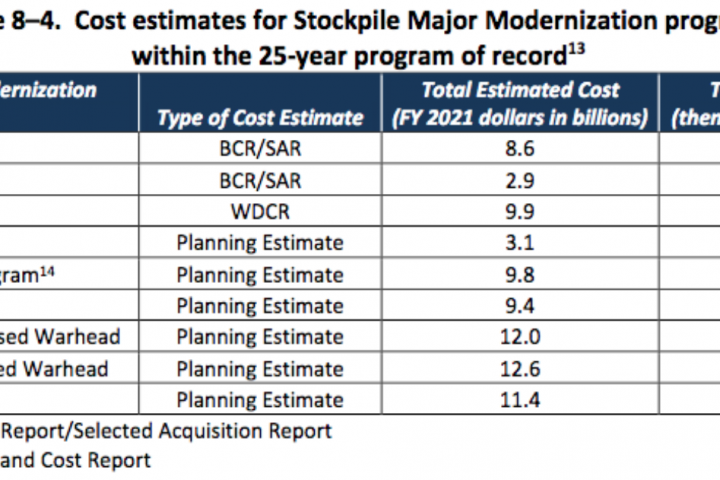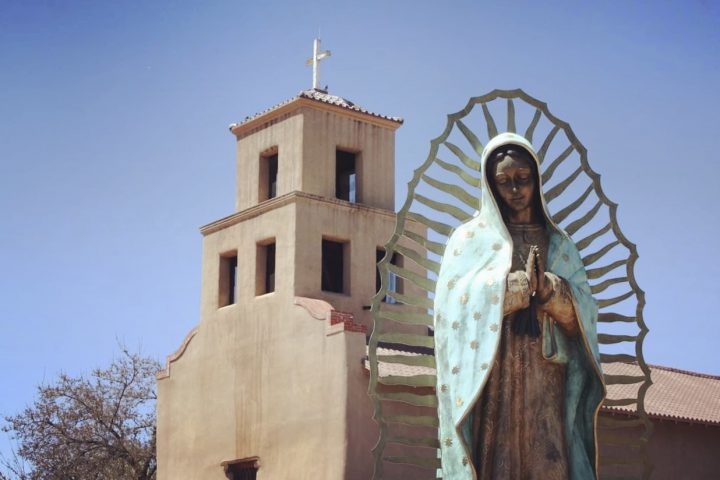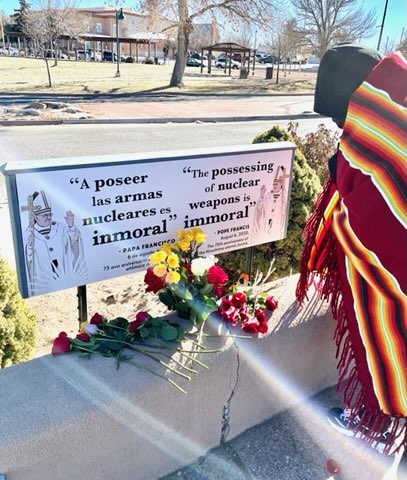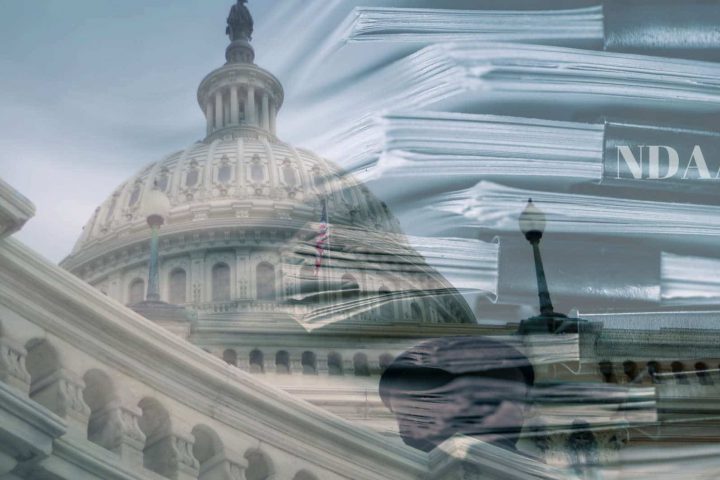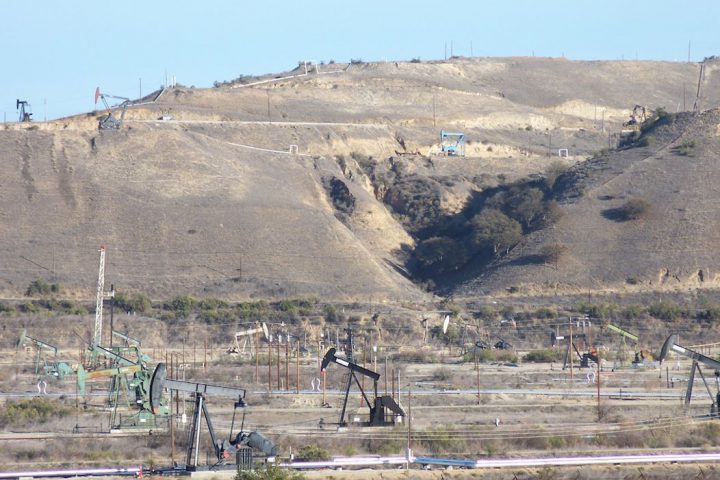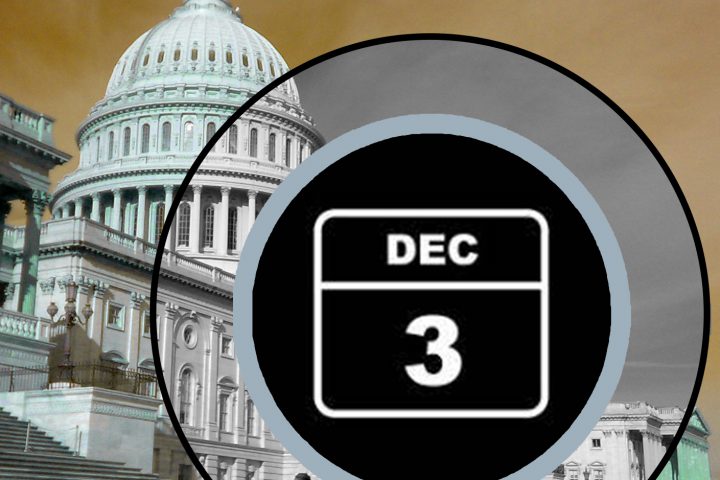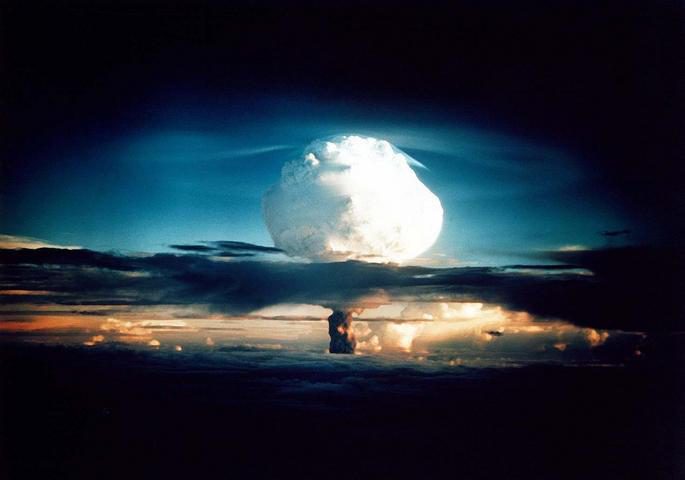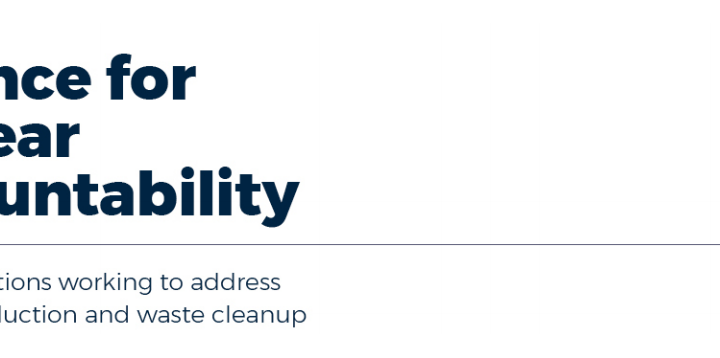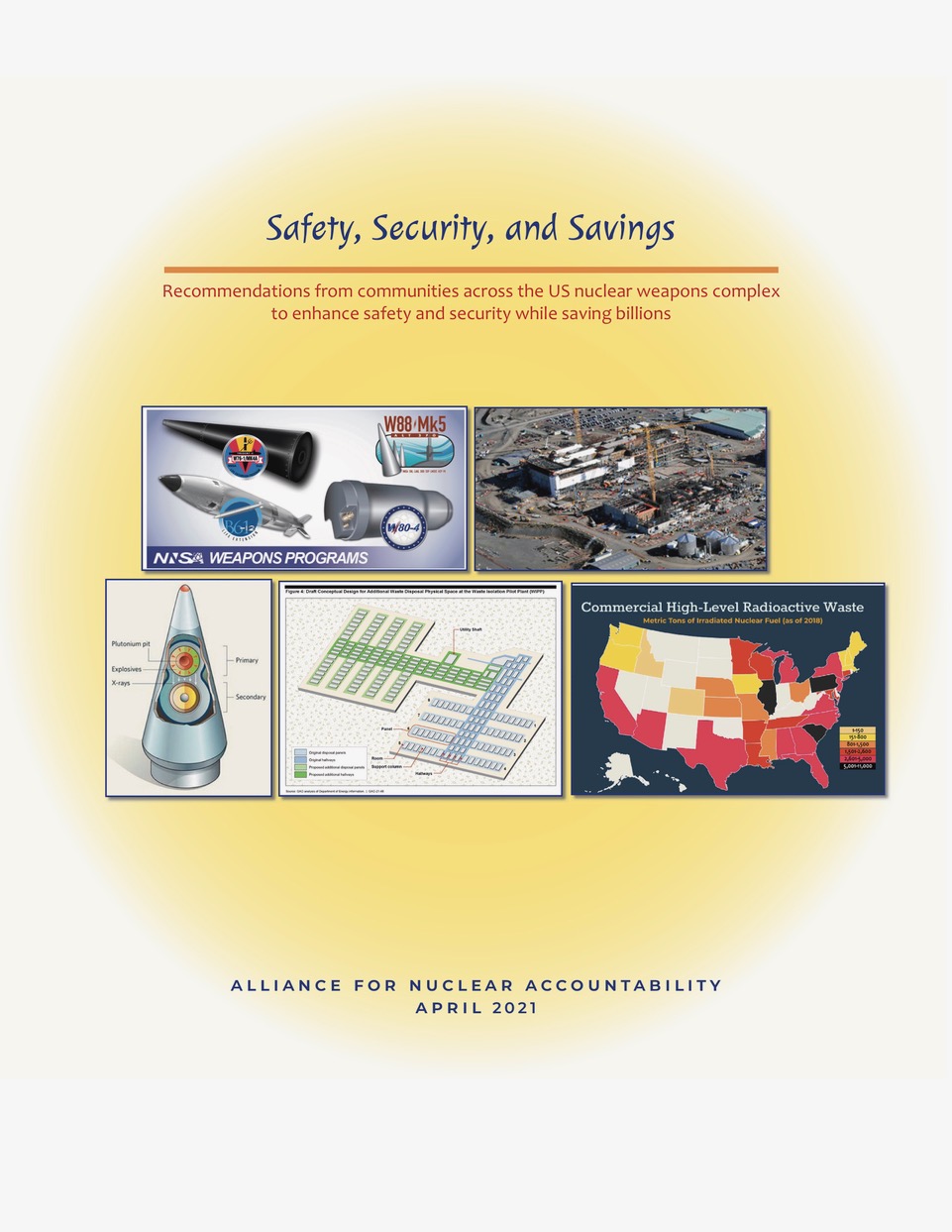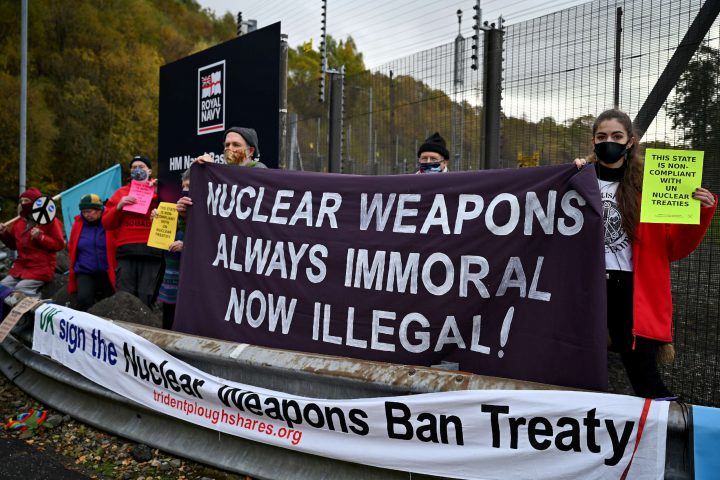The W93 warhead is a proposed new-design submarine-launched nuclear weapon for the Navy. Its need is not clear given that the Navy’s W76 warhead recently completed a major “Life Extension Program” that extended its service life by at least 30 years and increased its accuracy through a new arming, fuzing and firing set. The Navy’s other sublaunched warhead, the W88, is entering a major “Alteration” which will refresh its conventional high explosives and give it a new arming, fuzing and firing set (presumably increasing its accuracy as well).
Category: Nuclear Weapons
Millennials Memeing Nuclear War
 It seems like my generation has never before experienced this much nuclear fear. And what do we do with it? Laugh any way we can, for one. Putin has threatened the use of nuclear weapons by increasing Russia’s nuclear forces alertness levels and stating in a national address, “…For those who may be tempted to interfere in these developments from the outside, No matter who tries to stand in our way or all the more so create threats for our country and our people, they must know that Russia will respond immediately, and the consequences will be such as you have never seen in your entire history.”
It seems like my generation has never before experienced this much nuclear fear. And what do we do with it? Laugh any way we can, for one. Putin has threatened the use of nuclear weapons by increasing Russia’s nuclear forces alertness levels and stating in a national address, “…For those who may be tempted to interfere in these developments from the outside, No matter who tries to stand in our way or all the more so create threats for our country and our people, they must know that Russia will respond immediately, and the consequences will be such as you have never seen in your entire history.”
Nuclear simulations have come close to capturing the extra-short attention spans of millennials and gen-z, but there’s never been anything like the current real time situation that has ever put this much attention on the reality of the threat of nuclear weapons. And of course the only recourse for a heavy dose of reality is a flood of relevant comedy.
How are we Back Here…? Reflecting on the History of Nuclear Close Calls as Putin’s Threat Reignites Cold War Fears of Nuclear War
“Sadly, we are treading back through old historical patterns that we said that we would never permit to happen again,”
– Fiona Hill, Former Senior Director for Europe and Russia at the United States National Security Council, in an interview with POLITICO, today, February 28, 2022: ‘Yes, He Would’: Fiona Hill on Putin and Nukes
Happy Are Peacemakers Who Wake Up the Rest of Us
“The difference is that [Santa Fe Archbishop] Wester is alone and standing in what came to be the center of the “American Nuclear Soul” in Santa Fe calling us again to examine our American consciences. As Pope Francis said at the Peace Memorial in Hiroshima on Nov. 24, 2019, “The use of atomic energy for purposes of war is immoral, just as the possessing of nuclear weapons is immoral. … How can we speak of peace even as we build terrifying new weapons of war?”
Current U.S. Nuclear Weapons Issues: New Year’s Update — January 15, 2022
U.S. nuclear weapons issues:
- In anticipation of the NonProliferation Treaty Review Conference that was to start January 4 the P-5 (original nuclear weapons powers U.S., Russia, China, France and U.K.) came out with an unbelievable collective statement on how they are in compliance with the NPT Article VI mandate to disarm. Then the Review Conference was indefinitely postponed because of omicron.
- Biden signed the FY 2022 Defense Authorization Act (DAA). Congress gave the Pentagon $24 billion more than Biden asked for. So much for ending endless wars. The DAA fully authorizes what the Biden Administration asked for National Nuclear Security Administration nuclear weapons programs, which increased Trump’s FY 2021 budget which saw a 25% from his FY 2002 budget. LANL is to get a cool billion in FY 2022 for expanded plutonium pit production alone.
- Still no appropriations. Second Continuing Resolution (CR) runs out in February.
- First anniversary of Treaty on the Prohibition of Nuclear Weapons January 22
Signs Calling for a Future of Peace Through a Reminder of the Past
Less than a week before the Christmas holiday, over 125 people came together at the statue of Our Lady of Guadalupe in the afternoon of Sunday, December 19th to listen to Archbishop John C. Wester of the Archdiocese of Santa Fe give a blessing to two “signs of peace” he unveiled on-site during a short ceremony. The signs were revealed to show an image of Pope Francis and a quote uttered by the pope in Hiroshima in 2020: “The possession of nuclear arms is immoral.” During the blessing, the Archbishop spoke on his memories of “those days during the Cuban missile crisis when I would walk home from school having been instructed what to do in the event of a nuclear attack within a few thousand yards of a nuke missile site in San Francisco,” before issuing a call for the world to rid itself its nuclear weapons.
“We need to be instruments of peace,” he said, especially as we head into the Christmas season, a “season of peace.”
Wester said that the current arms race “is more ominous” than any that came before. He touched on the growing tension around the Russia-Ukraine border in mentioning that there are at least “40 active conflicts in the world,” and said “our archdiocese needs to be facilitating, encouraging an ongoing conversation” about nuclear disarmament. This is especially true in light of the fact that two of the US’s three nuclear weapons laboratories are to be found in the dioceses of Sandia and Los Alamos, and on top of that there are more nuclear warheads in his dioceses from the 2,500-some count stored in reserve at the Kirtland Air Force Base at Albuquerque. All of this means that more money is spent in his dioceses than any other dioceses in the country and perhaps the world.
Current U.S. Nuclear Weapons Issues: Monthly Update — December 15, 2021
FY 2022 National Defense Authorization Act: The Bad News.
As Politico put it:
PROGRESSIVES’ PENTAGON POUNDING: … progressives barely put their stamp on Pentagon policy this go-round. Bipartisan provisions requiring women to register for the draft, cracking down on Saudi Arabia and imposing sanctions on Russia were nixed; legislation repealing outdated Iraq war authorizations fell by the wayside; reforms to the military justice system and efforts to combat extremism in the ranks were pared back; and a proposal to give Washington, D.C., control of its National Guard was dropped,” they wrote. Democrats hold power in the House, Senate and White House for the first time in more than a decade, yet the high-profile defense bill got more GOP votes than from Biden’s own party. As progressive lawmakers made their dissatisfaction with the bill’s high price tag clear, centrist Democrats knew they needed Republican support to pass the House and Senate.”
Progressives truly felt they had a historic chance to turn their priorities into policy, but the realities of a 50-50 Senate with no filibuster made that near impossible. And with midterms next year, it’s likely they missed their best chance.
Nuclear weapons: Congress added $500 million to Biden’s request for NNSA Total Weapons Activities, which was essentially Trump’s request to begin with. Trump’s Sea-Launched Cruise Missile and B83 (1.2 megatons) service life program were kept. $1.72 billion request for “Plutonium Modernization” authorized.
- However, the NDAA is authorization, not appropriations. The 2nd Continuing Resolution runs until February after which the appropriators will have to come up with something. There’s a chance that the Sea-Launched Cruise Missile and B83 sustainment program could be shot down. While those would be notable victories, they really only amount to damage control (i.e., rolling back two of Trump’s pet projects) as the $1.7 trillion modernization beast lumbers on.
Where to Store the Nation’s Nuclear Waste? No One Has the Answer, Exactly. But It’s Probably Not “In a High-Risk Seismic Zone.”
It seems obvious that “when assessing the aptitude of a site to receive a deep nuclear-waste repository, seismic activity should be taken into account.” (IAEA). At the moment, the only repository of this kind in the U.S. is the Waste Isolation Pilot Plant (WIPP), the nation’s main nuclear weapons waste storage site. WIPP lies a half mile underground in a salt formation in southeastern New Mexico. Additional nuclear waste storage facilities are planned to be built nearby, along the border between southeastern New Mexico and west Texas, where risks of quakes caused by oil and gas fracking operations in the area are rising.
“The occurrence of smaller earthquakes began to increase in 2017, when oil and gas boomed in the region, up to about three per day recently. In 2021, records show the region was on track for more than 1,200 earthquakes with magnitudes of 1 to 4.” KRQE
In New Mexico in July, a 4.0 temblor shook the southeast corner of the state. Meanwhile, just over the border on the Texas side, the U.S. Nuclear Regulatory Commission approved a high-level waste facility, and Holtec International is trying to put their share of the nation’s commercial nuclear waste there as well, on the New Mexico side.. Holtec, with support from the Nuclear Regulatory Commission, wants to build a nuclear waste storage facility for up to 100,000 tons of spent nuclear fuel rods 12 miles north of WIPP, a plan opposed by New Mexico Gov. Michelle Lujan Grisham and others in state government.
“All of these nuclear sites are surrounded by brine injection wells, the likely cause of the increased seismicity in the basin.” Source NM
Current U.S. Nuclear Weapons Issues Updates — November 15, 2021
The current Continuing Resolution keeping the government running expires 12/3. Another Continuing Resolution is likely.
The Pentagon has released a major threat assessment of China at https://media.defense.gov/2021/Nov/03/2002885874/-1/-1/0/2021-CMPR-FINAL.PDF.
Under “Nuclear Capabilities” it concludes:
► Over the next decade, the PRC [People’s Republic of China] aims to modernize, diversify, and expand its nuclear forces.
► The PRC is investing in, and expanding, the number of its land-, sea-, and air-based nuclear delivery platforms and constructing the infrastructure necessary to support this major expansion of its nuclear forces.
► The PRC is also supporting this expansion by increasing its capacity to produce and separate plutonium by constructing fast breeder reactors and reprocessing facilities.
► The accelerating pace of the PRC’s nuclear expansion may enable the PRC to have up to 700 deliverable nuclear warheads by 2027. The PRC likely intends to have at least 1,000 warheads by 2030, exceeding the pace and size the DoD projected in 2020.
► The PRC has possibly already established a nascent “nuclear triad” with the development of a nuclear capable air-launched ballistic missile (ALBM) and improvement of its ground and sea-based nuclear capabilities.
► New developments in 2020 further suggest that the PRC intends to increase the peacetime readiness of its nuclear forces by moving to a launch-on-warning (LOW) posture with an expanded silo-based force.
This is bound to have a major influence on Biden’s Nuclear Posture Review, to be released in early 2022. China’s expansion of its nuclear weapons capabilities, along with U.S. and Russian “modernization” programs, may also be big issues at the January 2022 NonProliferation Treaty Review Conference.
Current U.S. Nuclear Weapons Issues Updates — October 15, 2021
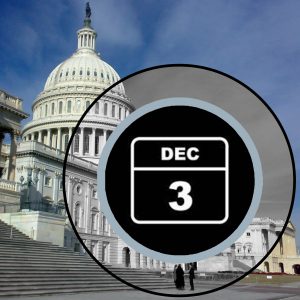
Congress passed a continuing resolution that keeps the government running until December 3. It freezes funding at 2021 levels which at least prevents short-term budget increases for nuclear weapons modernization programs and has no “anomalies” (i.e. exceptions) for these programs. That said, Biden passed on most of Trump’s nuclear weapons excesses forward in his FY 2022 budget, so it’s not like it makes a whole lot of difference.
Mitch McConnell agreed to let the Democrats raise the national debt ceiling, thereby averting national and international economic disaster. How gracious of him.
Democrats and Republicans joined together to roll Biden on the money in the FY 2023 Defense Authorization Act for the entire military (including the National Nuclear Security Administration (NNSA). These bipartisan porkmeisters added $23.9 billion for $768 billion in total defense spending. The new bogeyman China was repeatedly invoked as the rationale (in comparison China now spends around $250 billion annually on its military).
Continue reading
International Day for the Total Elimination of Nuclear Weapons 2021
Today, Sunday, September 26, 2021, marks the United Nations International Day for the Total Elimination of Nuclear Weapons. The United Nations has been working toward achieving global nuclear disarmament since the organization’s inception; it was the subject of the General Assembly’s first resolution in 1946, with a mandate to make specific proposals for the elimination of atomic weapons and all other major weapons adaptable to mass destruction. The International Day for the Total Elimination of Nuclear Weapons has been observed annually since 2014, serving as a tool to enhance public awareness and education about the threat posed to humanity by nuclear weapons and the necessity for their total elimination. In 2013, the year the International Day for the Total Elimination of Nuclear Weapons was introduced, the President of the General Assembly noted that a “renewed international focus on the catastrophic consequences of nuclear weapons has led to a reinvigoration of international nuclear disarmament efforts.”
76 Years After the First Nuclear Bomb Test, the U.S. is Still Dead Set on Building New Weapons of Mass Destruction
Last week, July 16 2021, marked the 76th anniversary of the world’s first nuclear bomb explosion. Within another month, memorials and commemorations will be held for the Japanese cities of Hiroshima and Nagasaki, which the U.S. bombed on 6 and 9 August 1945, respectively. Although it was unknown to most residents of New Mexico until after the United States’ atomic bombing of Japan, the citizens and communities in the southern region of the state were in fact the first nuclear victims.
When the U.S. Army detonated an atomic bomb on July 16, 1945 at 5:29 a.m., “its thunderous roar during the rainy season knocked people from breakfast tables in Tularosa and sent others on the Mescalero Apache reservation into hiding.” (axios.com) Hispanics and Mescalero Apache tribal members in New Mexico are working to pressure lawmakers to compensate those who have suffered extremely because of the experiment. Rare forms of cancer and other health problems have been discovered in those living near the site of the Trinity Test, and the vast, noxious consequences of this experiment have had lasting impact on now multiple, entire generations.
MEDIA ADVISORY: WHAT TO LOOK FOR IN THE U.S. DEPARTMENT OF ENERGY’S FY 2022 NUCLEAR WEAPONS AND CLEANUP BUDGET REQUEST
For use with DOE’s scheduled budget release on Friday May 28, 2021
For more information, key contacts are listed below.
The White House is releasing its detailed Fiscal Year 2022 budget on Friday, May 28. A so-called “skinny budget” was released on April 9 that increased Department of Energy (DOE) funding to $46.1 billion, which reportedly includes major new investments in clean energy and climate change abatement. That said, historically roughly 60% of DOE’s funding has been earmarked for nuclear weapons production and cleanup of Cold War wastes and contamination. The pending budget release will finally provide details on those programs.
Because the budget release is so late Congress has already announced that it can’t consider the annual Defense Authorization Act until September. Related appropriations bills will no doubt be delayed too. This means that the government will probably have to run on a Continuing Resolution(s) for much of FY 2022 (which begins October 1, 2021).
The Alliance for Nuclear Accountability strongly opposed the massive 25% FY 2021 increase that the Trump Administration gave to the National Nuclear Security Administration’s (NNSA’s) nuclear weapons programs and proposed cuts to Department of Energy cleanup. In addition, DOE’s nuclear weapons and environmental management programs have been on the Government Accountability Office’s “High Risk List” for project mismanagement and waste of taxpayers’ dollars for 28 consecutive years. Related, the Congressional Budget Office (CBO) has just released a report that projects a 28% increase in costs for so-called “modernization” of U.S. nuclear forces that between the Defense Department and DOE is expected to cost around $1.7 trillion over 30 years.
The Alliance for Nuclear Accountability, a 34-year-old network of groups from communities downwind and downstream of U.S. nuclear weapons sites, will be analyzing the following critical issues. For details, contact the ANA leaders listed at the end of this Advisory.
Virtual Advocacy for “Safety, Security, and Savings” at ANA DC Days:
May 26, 2021
Nuclear Watch New Mexico virtually visited Washington, DC this month to participate in the Alliance for Nuclear Accountability’s “DC Days,” an annual event where organizations from across the nation, whose members are directly affected by nuclear weapons production and the incidental health and environmental consequences, make their voice heard to federal policy makers.
Nuclear Watch NM was focused on opposing new plutonium pit production at Savannah River Site and Los Alamos, pushing for safe and secure toxic cleanup and prioritizing public health while saving billions by terminating ill-conceived new nuclear weapons programs. View more information on these issues in the Alliance for Nuclear Accountability’s new report, “Safety, Security, and Savings,” which describes in detail the foundation of our 2021 advocacy. The report includes a series of fact sheets and recommendations covering new warheads, bomb plants, nuclear waste, cleanup, and more.
Nuclear Weapons Have Always Been Immoral. Now They’re Illegal.
On 7 July 2017, the Treaty on the Prohibition of Nuclear Weapons (TPNW) was adopted by the UN General Assembly. Just over three years later, the TPNW reached the 50 national ratifications needed to become international law. The treaty will enter into force on January 22, 2012, and nuclear weapons will become officially illegal under international law. This day will represent a culmination of years of campaigning for nuclear weapons to be reframed as a collective humanitarian problem, one which requires prohibition and elimination, rather than a national military defense asset that needs to be managed and even upgraded.
NNSA Head Props Up Nuclear Weapons Modernization…Again
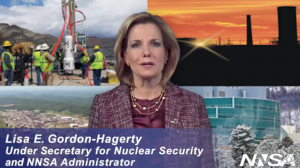 In her September 17, 2020 testimony before before the Senate Armed Services Committee, Lisa E. Gordon-Hagerty, Administrator of the National Nuclear Security Administration, restated the ongoing company line that more money must be spent on the US nuclear weapons stockpile, or the whole enterprise might fall over.
In her September 17, 2020 testimony before before the Senate Armed Services Committee, Lisa E. Gordon-Hagerty, Administrator of the National Nuclear Security Administration, restated the ongoing company line that more money must be spent on the US nuclear weapons stockpile, or the whole enterprise might fall over.
She stated, “The need to now modernize our nuclear weapons stockpile and recapitalize the supporting infrastructure needed to produce and maintain that stockpile has reached a tipping point.”
DOE Repeatedly Asks Safety Board for Time Extensions, Los Alamos Lab Asked for >150 Cleanup Milestone Extensions, But During Pandemic NNSA Rejects NM Senators’ Request for Extension of Public Comment on Plutonium Bomb Core Production
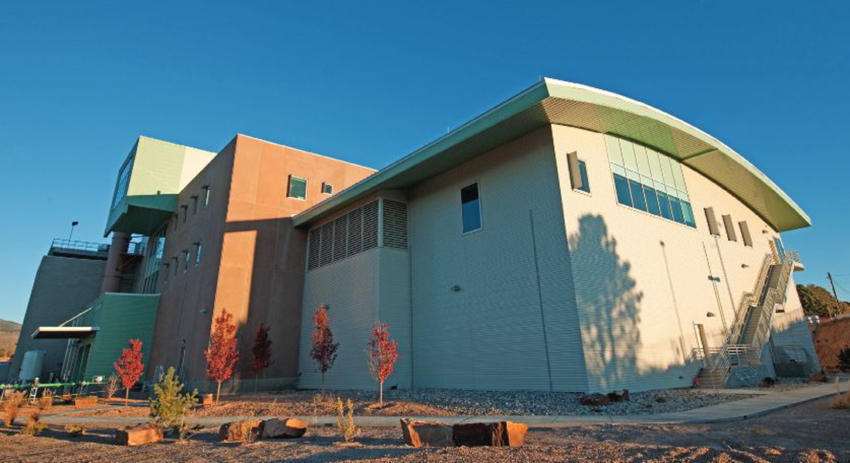
Lisa Gordon-Hagerty, head of the National Nuclear Security Administration (NNSA), has rejected a request by New Mexico Senators Tom Udall and Martin Heinrich to extend the public comment period on expanded plutonium “pit” bomb core production because of the COVID-19 pandemic. In contrast, even in normal times NNSA and its parent Department of Energy routinely ask other government agencies for major time extensions when it comes to cleanup and independent oversight.
The two Senators requested a 45 day comment period extension on behalf of more than 120 organizations and individuals. Before that, Tom Udall and Martin Heinrich were among 24 Senators who asked the Office of Management and Budget to extend all federal public comment periods during the coronavirus national emergency.
DOE Ignores COVID-19 Threat, Diverts Resources to Planning for Nuclear War by Releasing Draft Environmental Study on SRS Plutonium Bomb Plant
 Today, in the middle of the growing coronavirus pandemic, the U.S. Department of Energy ignored the real national crisis and irresponsibly shifted its focus to planning for nuclear war, revealing plans to construct a Plutonium Bomb Plant (PBP) at the Savannah River Site (SRS) in South Carolina.
Today, in the middle of the growing coronavirus pandemic, the U.S. Department of Energy ignored the real national crisis and irresponsibly shifted its focus to planning for nuclear war, revealing plans to construct a Plutonium Bomb Plant (PBP) at the Savannah River Site (SRS) in South Carolina.
DOE’s semi-autonomous National Nuclear Security Administration (NNSA) today formally released the Draft Environmental Impact Statement for Plutonium Pit Production at the Savannah River Site in South Carolina, whose proposed action is to establish the production of plutonium “pits” (nuclear warhead cores) at SRS at a rate of up to 125 pits per year, with at least 50 pits per year by 2030 as the stated objective for now.
Energy Dept. Nearly Triples Funding for Plutonium Pit Production, Cuts Cleanup in Half – But Refuses to Complete New Env. Impact Statement for Los Alamos Lab
Santa Fe, NM – Today the Department of Energy’s semi-autonomous nuclear weapons agency, the National Nuclear Security Administration (NNSA), announced that it will not complete a new site-wide environmental impact statement for the Los Alamos National Laboratory (LANL). The last site-wide environmental impact statement was in 2008.
Since that time a catastrophic wildfire burned to the western boundary of the Lab (likely to occur more frequently with climate change); an exploding radioactive waste drum improperly prepared by LANL shut down the Waste Isolation Pilot Plant for three years, costing taxpayers ~$3 billion to reopen; the full extent and depth of a hexavalent chromium plume contaminating the regional groundwater is still not fully determined; and LANL’s long track record of chronic nuclear safety incidences remain unresolved.
LANL Budget Increased by Nearly $1 Billion to Accelerate Work As Production Site for Nuclear Weapons Designs by Livermore Lab Cleanup Cut by 46%
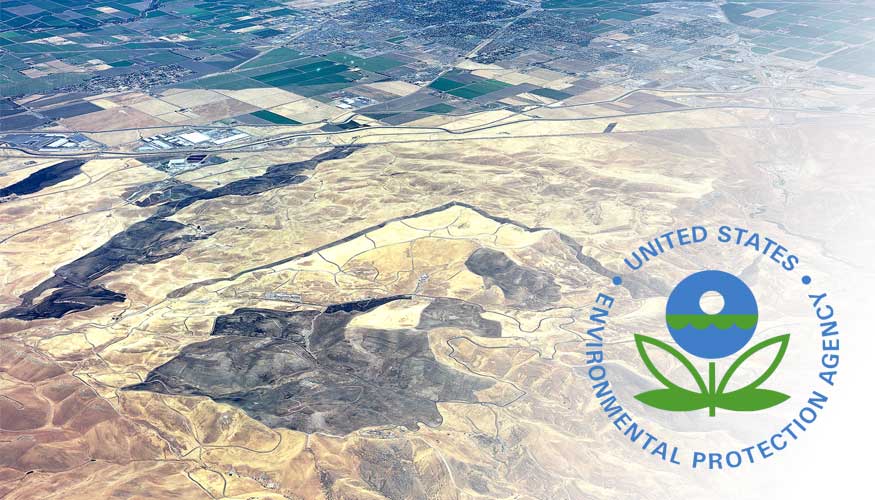
Santa Fe, NM – The Trump Administration has released more budget details for its proposed Fiscal Year 2021 federal budget for the Department of Energy and its semi-autonomous nuclear weapons agency, the National Nuclear Security Administration (NNSA). The Los Alamos National Laboratory (LANL) is slated to receive nearly a one billion dollar increase for its nuclear weapons programs (up 48%), overwhelmingly for new production. At the same time cleanup, whose need is caused by nuclear weapons production, is cut by 46%.
Significantly, LANL’s FY 2021 budget for design work of nuclear weapons stayed flat after falling by 28% from FY 2018 to FY 2019. Meanwhile, funding for nuclear weapons design work at the Lawrence Livermore National Laboratory more than doubled from FY 2019 to FY 2021.
As the NonProliferation Treaty’s 50th Anniversary Approaches U.S. to Soon Fund New Nuclear Warhead at $1 Billion Per Year
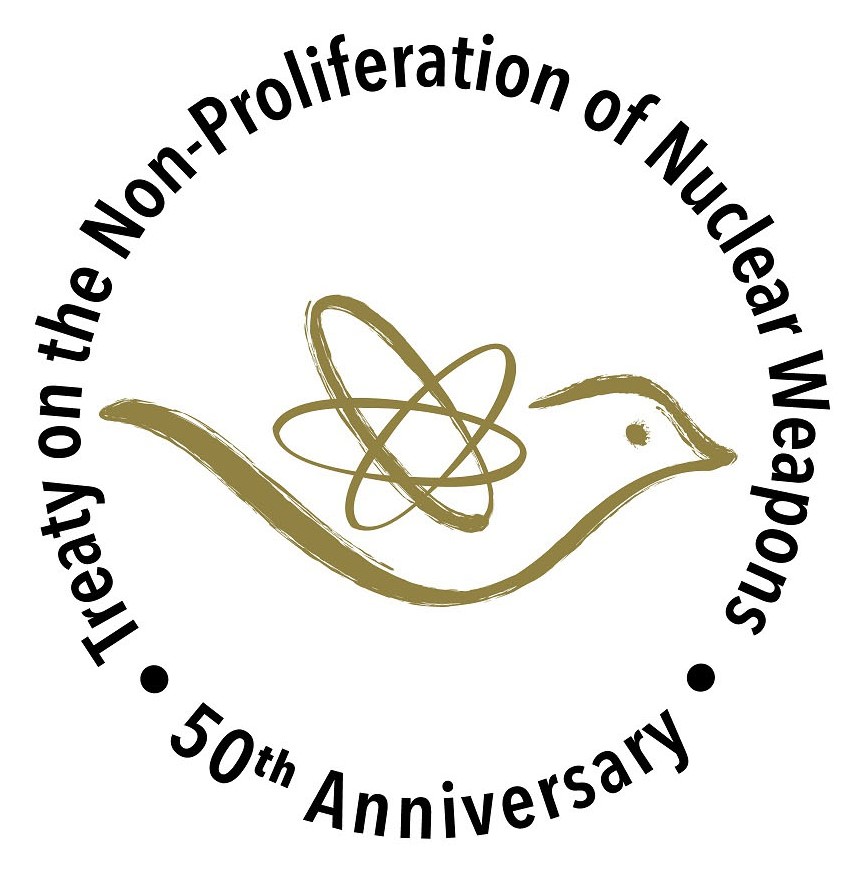
Santa Fe, NM – This March 5, 2020, marks the 50th anniversary of the NonProliferation Treaty, whose central bargain was that non-nuclear weapons states forswore acquiring them in exchange for which nuclear weapons states promised to enter into serious negotiations leading to their elimination. Those negotiations have never happened.
The Trump Administration has marked the occasion by finally releasing the detailed fiscal year 2021 Congressional Budget Request for the Department of Energy’s semi- autonomous nuclear weapons agency, the National Nuclear Security Administration (NNSA). The NNSA’s program for new and upgraded nuclear weapons gets a 3 billion dollar-plus mark up to $15.6 billion, slated to jump to $17 billion annually by 2025. This includes a new nuclear warhead, the submarine launched W93, initially funded at $53 million in FY 2021, but slated to climb to $1.1 billion annually by 2025. New warhead design and production typically take around 15 years or more.
Los Alamos Lab Cleanup Cut By 46%, Nuclear Weapons “Production Modernization” Jumps 57%
FOR IMMEDIATE RELEASE, February 12, 2020
Contact: Jay Coghlan, Nuclear Watch NM, 505.989.7342, jay[at]nukewatch.org
Santa Fe, NM – The Trump Administration has released more budget information for fiscal year 2021 for the Department of Energy (DOE). * It states that proposed cleanup at the Los Alamos Lab is “Consistent with the priorities established with the New Mexico Environment Department in the 2016 Consent Order…” It then goes on to cut LANL cleanup by $100 million from $220 million in FY 2020 to $120 million requested for FY 2021. (Pages 52 and 55)
Trump’s FY 2021 DOE Nuclear Weapons Budget Sets Post-Cold War High – New Nuclear Warhead Is Planned
Today the Trump Administration released topline budget numbers for fiscal year 2021 for the Department of Energy (DOE). This includes DOE’s semi-autonomous National Nuclear Security Administration (NNSA), whose nuclear weapons programs are slated to receive the highest amount of taxpayer dollars since the Cold War ended nearly 30 years ago.
This year 2020 marks the 75th anniversaries of the atomic bombings of Hiroshima and Nagasaki and the 50th anniversary of the Non-proliferation Treaty (NPT), which is commonly regarded as the cornerstone of international nuclear weapons nonproliferation. The NPT required the established nuclear powers to enter into serious negotiations leading to global nuclear disarmament, which they ignored. 2020 also marks the third anniversary of a nuclear weapons ban treaty that needs only 16 more nations to ratify before it goes into effect. The U.S. and other nuclear weapons powers vigorously oppose that ban treaty even as their “modernization” programs are fueling a new nuclear arms race and international arms control is collapsing.
Watchdog Groups Claim Nuclear Agency is Moving Forward to Manufacture New Plutonium Bomb Cores in Violation of National Environmental Law and an Existing Court Order
![]()


